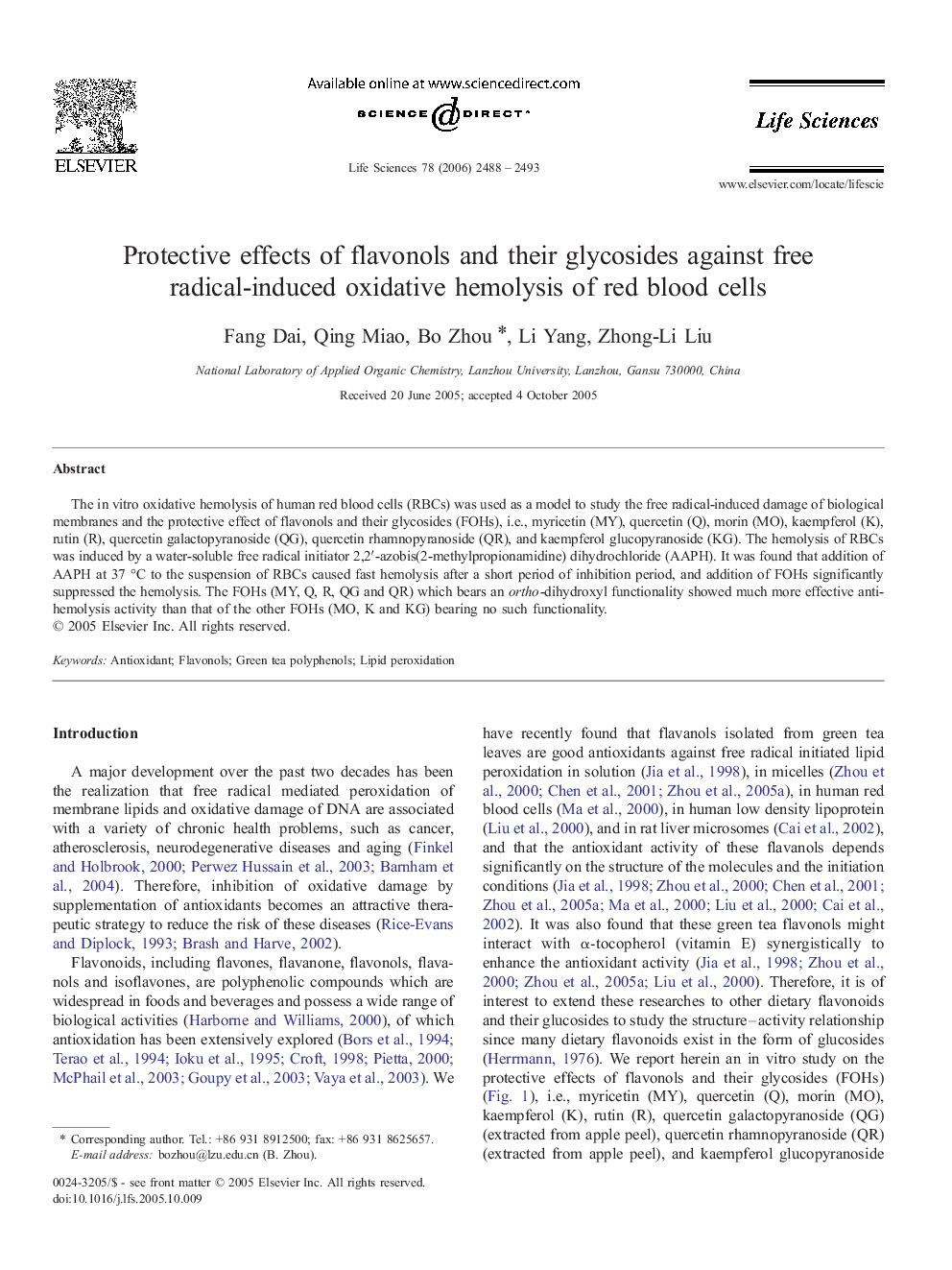| Article ID | Journal | Published Year | Pages | File Type |
|---|---|---|---|---|
| 2554689 | Life Sciences | 2006 | 6 Pages |
Abstract
The in vitro oxidative hemolysis of human red blood cells (RBCs) was used as a model to study the free radical-induced damage of biological membranes and the protective effect of flavonols and their glycosides (FOHs), i.e., myricetin (MY), quercetin (Q), morin (MO), kaempferol (K), rutin (R), quercetin galactopyranoside (QG), quercetin rhamnopyranoside (QR), and kaempferol glucopyranoside (KG). The hemolysis of RBCs was induced by a water-soluble free radical initiator 2,2â²-azobis(2-methylpropionamidine) dihydrochloride (AAPH). It was found that addition of AAPH at 37 °C to the suspension of RBCs caused fast hemolysis after a short period of inhibition period, and addition of FOHs significantly suppressed the hemolysis. The FOHs (MY, Q, R, QG and QR) which bears an ortho-dihydroxyl functionality showed much more effective anti-hemolysis activity than that of the other FOHs (MO, K and KG) bearing no such functionality.
Related Topics
Health Sciences
Medicine and Dentistry
Cardiology and Cardiovascular Medicine
Authors
Fang Dai, Qing Miao, Bo Zhou, Li Yang, Zhong-Li Liu,
